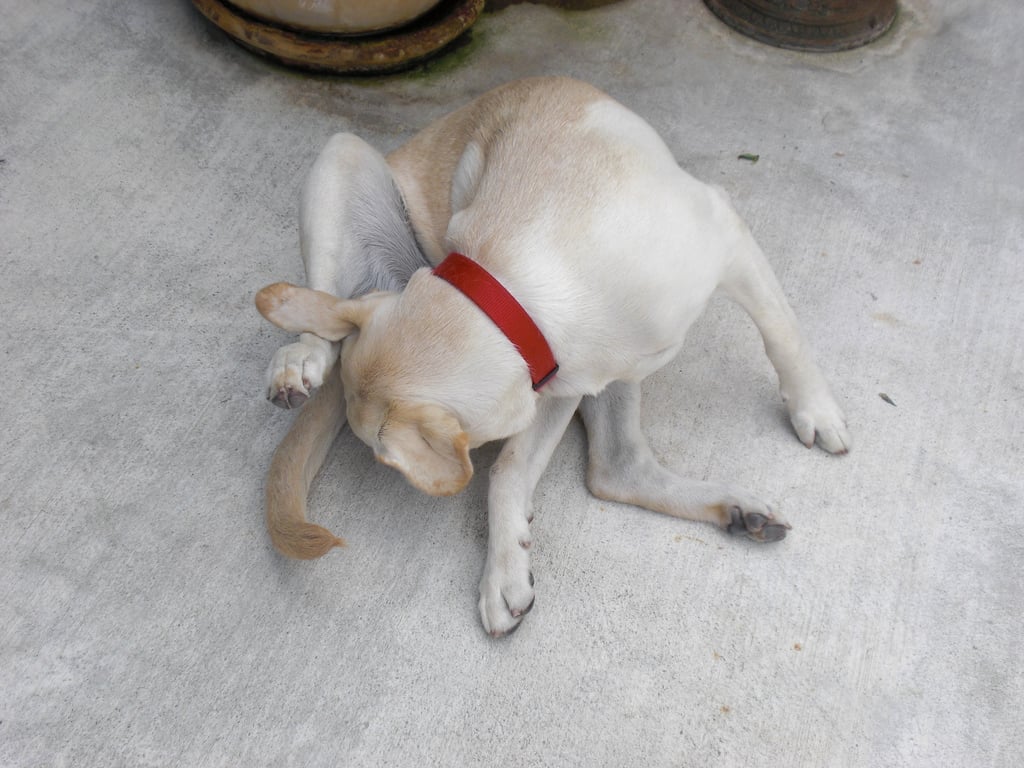Dogs get stressed just like humans. Maybe you’ve noticed behaviour changes in your dog lately. Perhaps they are acting out, or seem unusually tense, clingy, or distant. Often, stress can be causing these behaviour changes.
But as with many situations, we find ourselves in as dog owners, we can only wish dogs could speak to us and tell us what is wrong. Luckily, our dog’s have body language.
If your dog is new to your family, it will take time to understand what your dog’s body language is telling you about their stress level.
15 Signs Your Dog Is Stressed
To help recognise when your pet is feeling stressed, we’ve pulled together the common signs of stress in dogs, along with some causes and tips to help alleviate that stress.
- Showing the whites of eyes
- Position of ears: rigid or flattened
- Showing gums
- Unfocused barking
- Decrease in appetite
- Gas, bloating, diarrhoea
- Excessive licking
- Tucked tail
- Shaking or shivering
- Abnormal shedding
- Tense muscles
- Excessive drooling
- Itching and scratching
- Licking lips and nose
- Yawning
1. Showing the whites of their eyes
Dogs use their eyes to communicate (we all know how well the puppy dog eyes work).
To show stress, dogs bare the whites of their eyes. Their eyelids peel back, sometimes described as popping out their eyeballs.
You may see a crescent shape of white as they look side-to-side, which dogonesafe.com calls the “half-moon eye,” sometimes referred to as whale eye. In humans, we call this side eye, but your dog isn’t throwing shade. More likely, they are trying to tell you they are feeling freaked out about something.
2. The position of dog ears
The shapes of dog ears differ, but stress will make any dog’s ears react one of two ways. Some dogs ears perk up under stress, appearing rigid. However, most dogs will display stress by pulling their ears back and laying flat against the head, looking “pinned back.” By learning the usual positions of your dog’s ears, you will notice if their ears are overly perked up or pinned down. Either position indicates stress.
3. Showing gums
Playful dogs will show teeth, but when that lip curls, your dog could be warning aggression.
It’s vital to notice that curl before it becomes a snarl, the snarl before a snap, and a snap before a bite. Vetstreet notes that in response to stress, even whiskers can stand up more pointedly.
Watch your dog in play, and you may notice a change between the playful showing of teeth and a more dramatic lip curl, the warning of stress before possible aggressive behaviour.
4. Unfocused barking
Although some breeds are more prone to barking than others, prolonged, unexplained barking can be a sign of stress, particularly separation anxiety.
Other excess vocalisation to watch for:
- growling
- whining
- whimpering
- excessive panting
If your dog displays any of these common indicators of anxiety, they are probably experiencing stress.
5. Ingestion and digestion
If your dog’s food intake is inordinately fast, particularly if your dog may have gone hungry in the past, they may have stress around food scarcity. Or, as PetMD points out, a decrease in appetite might be due to stress.
Accompanied with other signs of stress, gastrointestinal issues like diarrhoea and constipation can be caused by anxiety. However, always consult a vet when your dog has prolonged stomach issues.
6. Licking
Trainer Jolanta Benal relates a common scenario where dog walkers stop to talk, and as the humans speak and focus their gaze on one of the dogs, the object of their attention decides it’s time to clean themselves.
It turns out that “prolonged gazing can elicit anxiety in dogs.” They aren’t trying to embarrass you. The licking is just their stress reaction.
Other kinds of stress reactions include recurring licking of one place, most often noticeable by telltale pinkish brown stains on your dog’s fur. They may be due to plain old boredom, but for animals, boredom may be its own kind of stress.
7. The old “tail between the legs” trick
This is the sign of stress most dog owners know, but not all dogs will use this particular form of body language.
However, if your dog’s tail abandons its normative position and takes positions that indicate stress, you can be pretty sure your dog is stressed about something. The tail between the legs is the most common position of stress, but it may also be straight down.
8. More body language signals
The reality is, much of your dog’s body language can offer useful indicators of stress. Other signals to take into account are:
- Unnecessary shaking or shivering
- Abnormal shedding
- Tense muscles
- Excessive drooling
- Itching and scratching
- Licking lips and nose
- Yawning
But why is my dog stressed?
Some causes of stress are obvious, like a whole group of excited children. For many dogs, that’s pretty darn stressful. Other things to consider:
- Dogs thrive on routine and when it’s disrupted – whether it’s walk time or dinner time – they get nervous.
- Boredom causes stress. Lack of mental stimulation can eat at a dog. A toy, a task, and challenging exercise are all important to reduce stress.
- Noise overload. 21st-century living, particularly urban dwelling, bombards our dogs with loud noises.
- Former trauma. If you adopted a dog with a known traumatic past, more intervention might be required. For military dogs, for example, canine PTSD can be a real issue. Other traumatic events such as natural disasters, car accidents, neglect, and abuse, may have left behind emotional scars. In these cases, a behavioural specialist will probably be helpful.
- Separation anxiety. Dogs who have experienced big changes in their human family makeup may develop separation anxiety, or likely more accurately, isolation distress.
- New people. All dogs are different. Guests, children, crowded situations, or strange hands petting them may impact your dog’s nerves significantly.
- You. Yep. Your mood, especially agitation, will affect your loving companion, whether you’re worked up about your dog or something else entirely.
Ways to alleviate stress in your dog
Stress levels naturally waver, and sometimes stressful situations are unavoidable. Maybe a family member travels a lot, changing your dog’s schedule. Or you can’t help loud noises around where you live.
There are ways to generally avoid stressful situations for your dog and offer ways to alleviate stress.
- Prevention. Reduce stressful environmental factors, like exposure to noise or crowds. Exercise and mental stimulation are essential.
- Reciprocation and affirmation. Repeating back certain behaviours (lip licking, blinking) emulates and supports your dog’s efforts to calm down. You can also offer calming affirmations.
- Safe zone. Make sure your dog has a crate, area or mat they know is “their space” to feel safe and calm down.
- Training. Untrained dogs suffer needless anxiety trying to figure you out. And a trainer can help you improve any unintentionally stress-inducing behaviours.
- Consistent caregivers. kennels can create stress, as can strangers. A loving dog sitter reduces stress, as does a dog walker. Rover can help you find both dog walkers and sitters who stay at your home or provide dog boarding.
Most importantly, be aware. Note potential signs of stress in your dog, and consult your vet.
Further reading
- The Real Story behind Dog Separation Anxiety and Why It’s So Scary
- True Story: Our Dogs Were on Prozac. Here’s What Happened.
- When your Dog’s Shedding Is a Sign of Stress
- Why Dogs are Afraid of Fireworks, and 12 Ways to Help
- 7 Simple Steps to Creating a Room Just for Your Dog
- How to Socialize Your Rescue Dog
- 15 Signs That Your Dog Is Stressed
- 4 Surprising Ways You’re Scaring Your Dog
___
Featured image via Flickr/yamada





